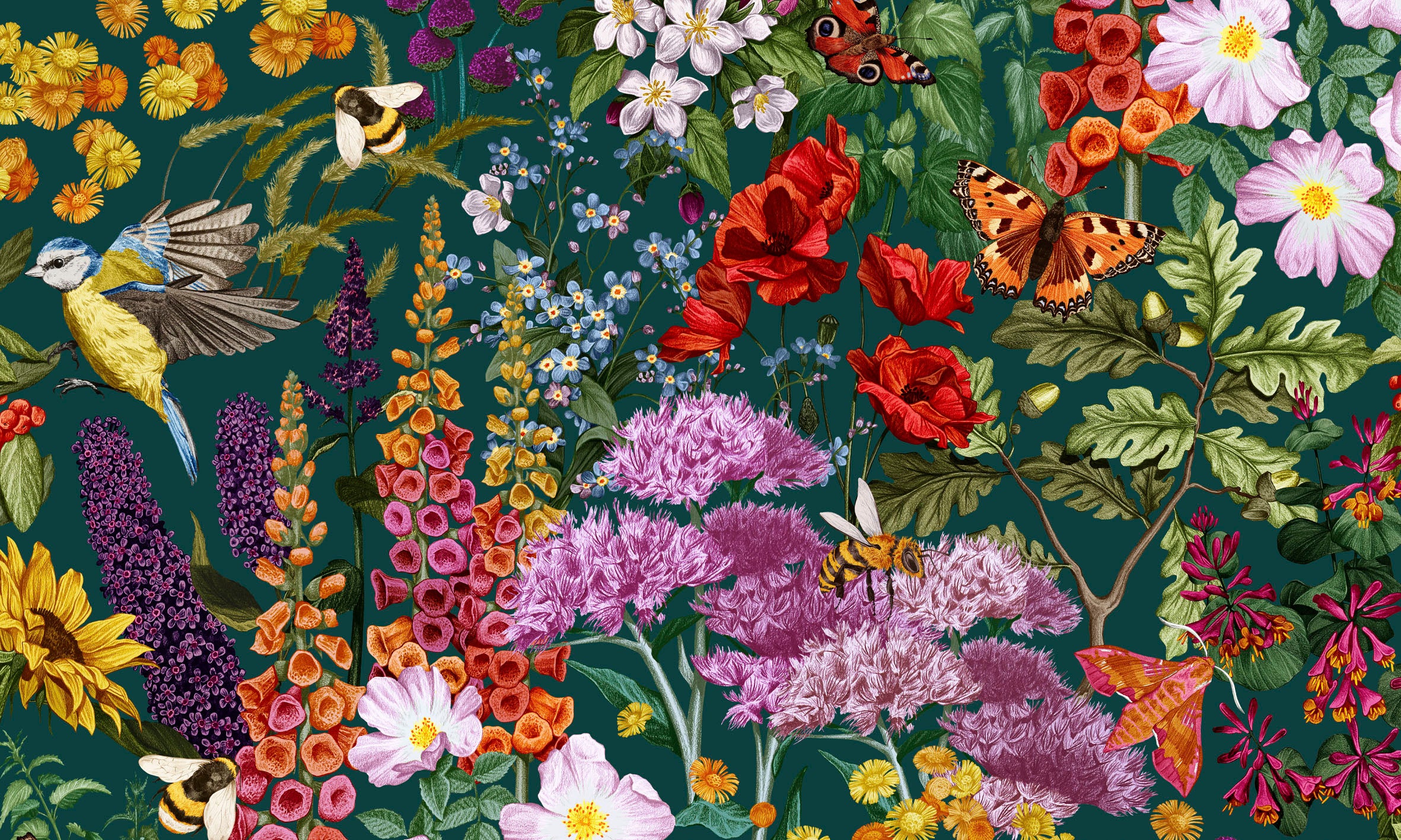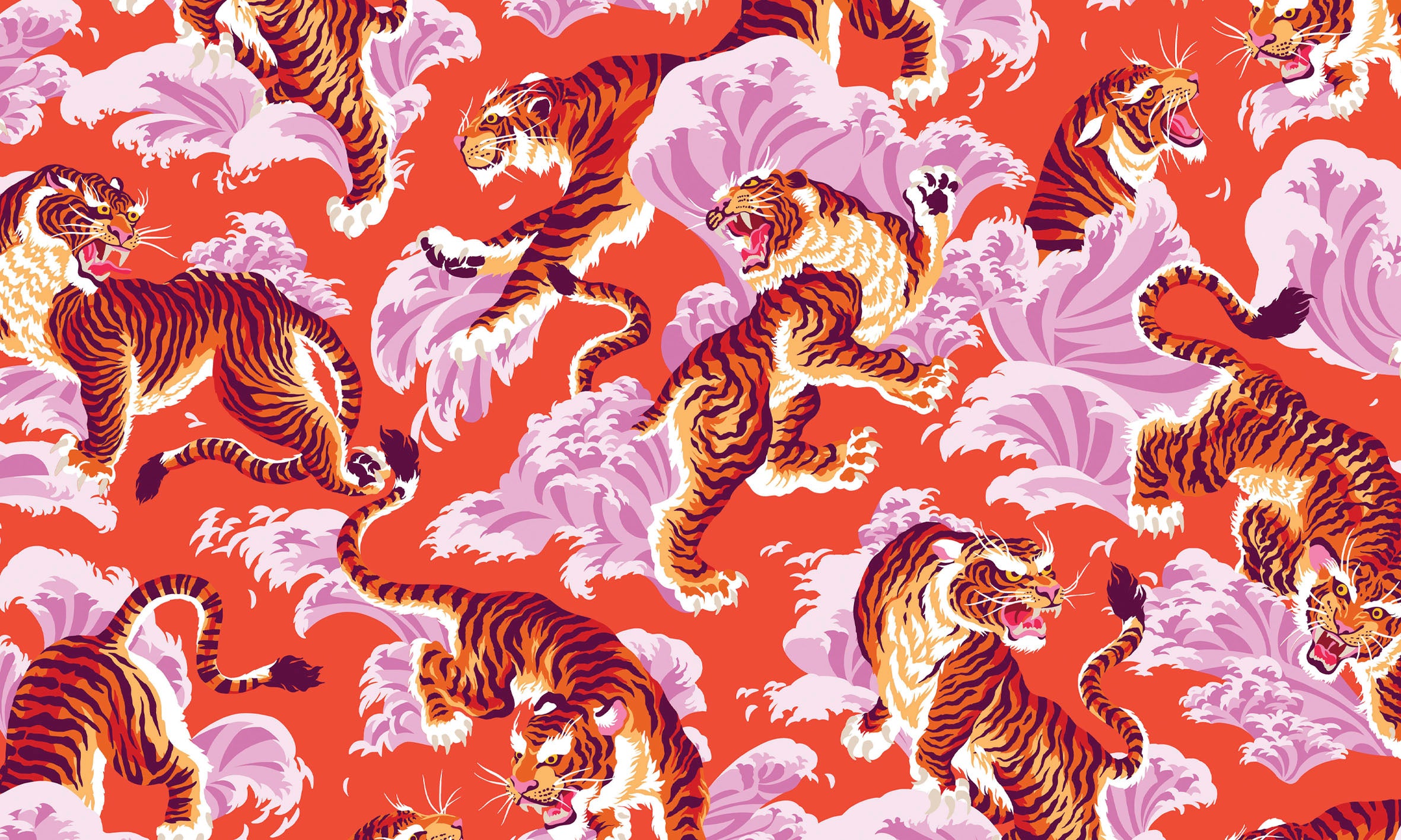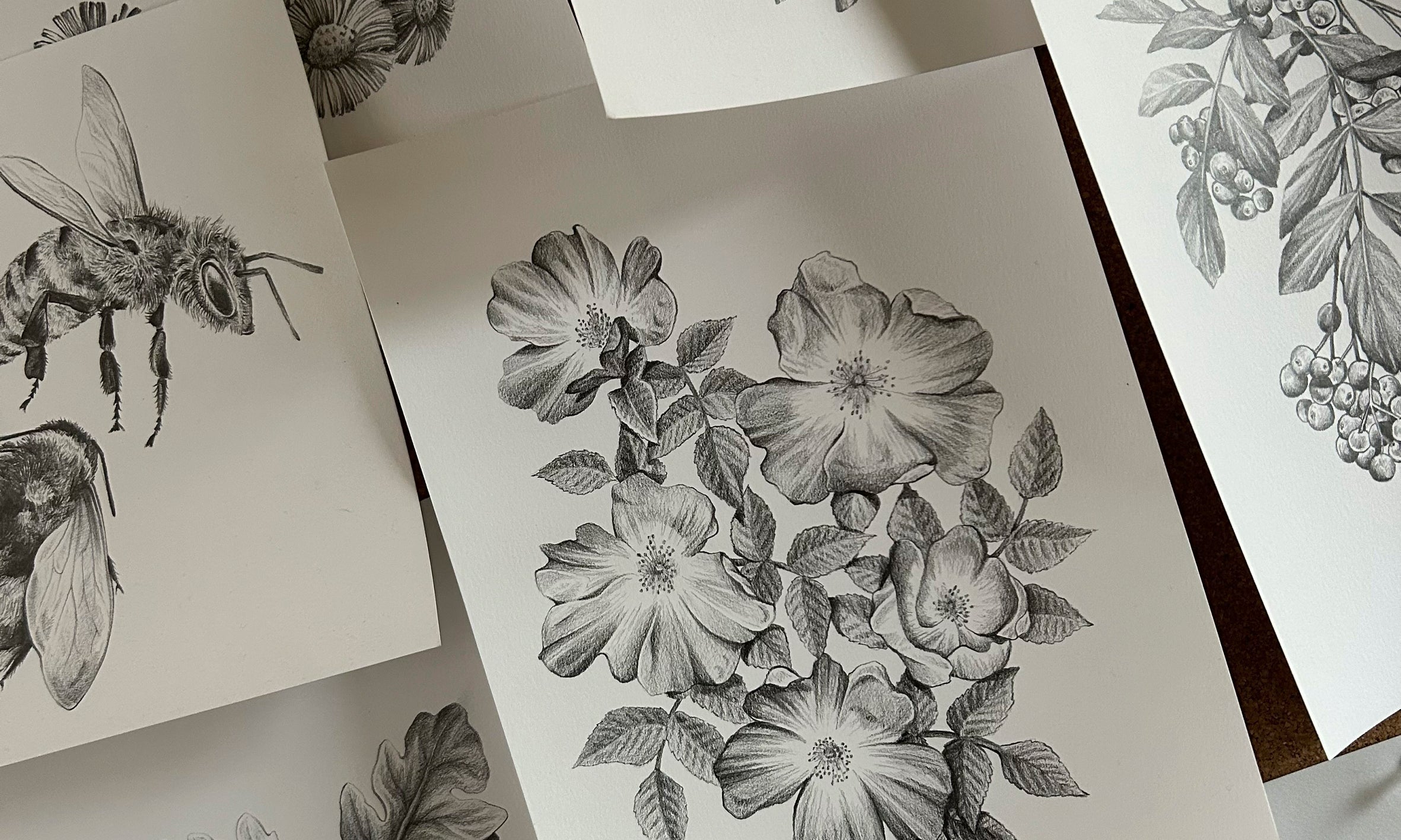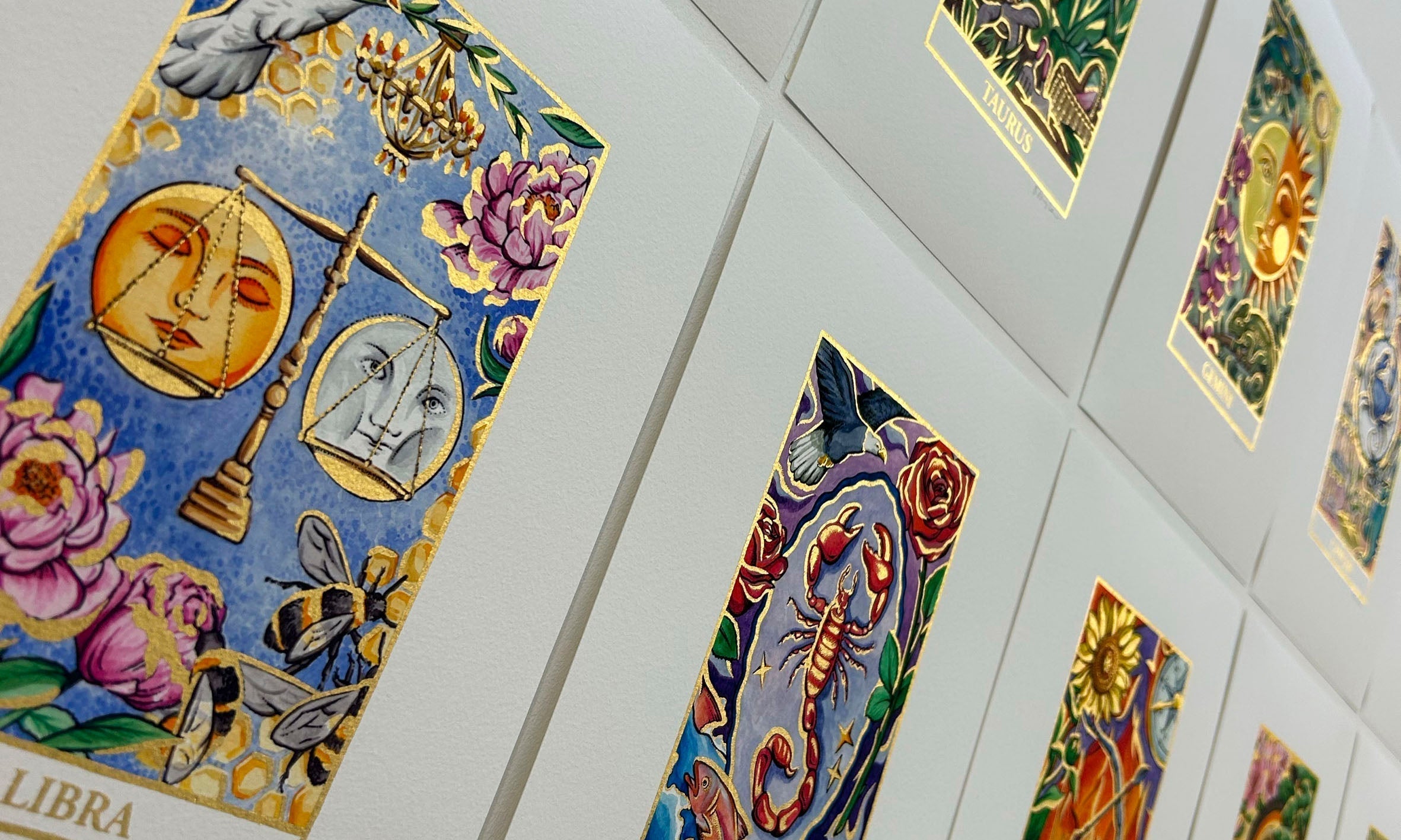Stay Wild

This print is all about fighting back against biodiversity loss. The design showcases British biodiversity by celebrating the beauty of a healthy ecosystem.
The UK’s breadth of wildlife is famous worldwide, but sadly we’ve lost almost half of our biodiversity since the 1970s. This is mostly due to loss of habitat from commercial farming and construction with 72% of UK land managed for agriculture, with 8% of UK land built on.
According to the Natural History Museum, 41% of species have declined. Of these, 26% of mammals are at risk of extinction and 22% of bird species have declined. Some animals have fared badly. Hedgehogs and turtle doves have declined by 95% and 98% respectively.
It is not only animals. We’ve lost 97% of wild meadows and 86% of corn bunting. People often focus on animals when it comes to wildlife, but the UK’s huge range of plants make this ecosystem so special.
We need to put biodiversity back on the agenda and appreciate the unique role each species plays.
Each species inside this print has a different role to play but it doesn’t even scratch the surface of what’s out there in a fully diverse ecosystem.
The blue tit, nature’s natural pest control. A family of blue tits can eat 100,000 aphids a year - making them an essential aspect of organic gardening. Birds are great at controlling insect populations and for seed distribution
We had to champion bees with all the important work they do pollinating our plants. It is worth noting that there are over 270 bee species in the UK ranging from the well known honey bee, to bumblebees and solitary bees. And it’s not just bees… a lot of other species like butterflies, moths, beetles and flies are all pollinators and help our plants produce seeds to reproduce.
Hemp agrimony, Eupatorium cannabinum. Their pale mauve flowers are attractive to many insects, and birds. They grow in damp ground and are especially useful for growing on banks of ponds and streams.
Coltsfoot, Tussilago farfara. These bright yellow, dandelion-like flowers bloom in early spring. Although classified as a weed, their seeds are loved by birds and are hardy plants able to grow in most soils.
Foxglove, Digitalis purpurea. Their tall spire of colourful flowers in late spring/late summer are popular with bees and truly distinct in shape. Suitable for a shady area, they are a vision in a woodland.
Grasses, e.g. Yorkshire fog. Caterpillars of butterflies, such as Speckled Wood and Scotch Argus, feed on the leaves. Tussocks also provide a habitat for beetles, spiders, frogs, and toads. Suitable in any type of well-drained soil, preferring full sun.
Stinging nettle, Urtica dioica. Well known as a plant that gardeners may want to dig up! The peacock butterfly (Inachis io) uses this plant to lay its eggs on and for the caterpillars like the small tortoiseshell butterfly eat the foliage before pupating. The leaves are also rich in vitamins and make a tasty tea. They can grow in semi shade, in most soils.
Sunflower, Helianthus annuus. Their cheery bright yellow flowers in the summer attract butterflies and bees whilst their seeds are popular with birds. Large seed heads can be stored for use in winter. Requires full sun and grows in fertile, well-draining soil.
Teasel, Dipsacus fullonum. Pale mauve flowers July – August. Bumblebees and other insects feed on the pollen. Tall, striking dried flower heads provide seeds throughout the winter for birds, especially goldfinches. Will grow in most soils including stream banks, neutral to alkaline.
Buddleia, Buddleia davidii. Sweetly scented violet/purple flowers with an orange eye are very popular with butterflies and other insects.
Dog rose, Rosa canina. A shrub or climber. The delicate pale pink flowers are a delight to see in the midsummer amongst hedges and trees. They attract many insects including bees. The shiny red hips in the autumn provide food for many birds including the greenfinch.
Honeysuckle, Lonicera periclymenum. The sweet perfume of honeysuckle is full of joy. The nectar is enjoyed by many butterflies and moths, such as the night-flying elephant hawk-moth. The white admiral butterfly lays its eggs on the honeysuckle. Beneficial insects such as lacewings are attracted to aphids that feast on the plant. Red berries, following in the autumn, provide food for many birds and small mammals. A rare bird, the pied flycatcher, depends almost totally on honeysuckle for nest building material. Suitable for semi-shade.
Crabapple, Malus sylvestris. Pretty pink or white flowers in the spring, followed by small bitter fruit in the autumn. Many mammals such as foxes and badgers, as well as birds, enjoy the fruit. Over 90 associated insect species thrive in their environment.
English Oak, Quercus robur. These ancient trees can provide home for more than 284 species of associated insects. Although lofty at full height, this tree can be pollarded, or coppiced, and can also be ‘laid’ to make a hedge.
Rowan, Sorbus aucuparia. Sweet smelling flowers in the spring attract many insects. Orange berries in the autumn are an important food source for many birds and small mammals such as hedgehogs. Over 28 associated insect species. Can survive in exposed situations.
A mix of long grass and wildflowers, such as common poppies (Papaver rhoeas), corn marigold (Glebionis segetum) and ox-eye daisy (Leucanthemum vulgare), will attract pollinating bees and butterflies, and provide shelter to other animals.
One of the most important parts of biodiversity is our soil. Making sure it is full of healthy microorganisms ensures future crops will remain healthy. Rotating crops in the same soil and avoiding the use of pesticides allows for a much healthier ecosystem (from the ground up)!
By purchasing this print you are supporting charity organisations and projects that restore biodiversity - thank you!
We encourage everyone to embrace their wild side at a personal level too. Introduce more natural balance into your home and green space, and let’s make room for more biodiversity.
If you aren’t sure how to attract wildlife to your garden, the best place to start is with plants. Whether you have room for raised beds or just a few pots, the right mix of flowers will help insects thrive, no matter the size of your space. The best plants for pollinators are those native to the UK, as our insects have evolved alongside them for millennia. Also consider the time of year your plants will flower. Try to include a mix that, together, will provide sustenance throughout the year.
Spring flowering plants
- Stinking hellebore
- Primrose
- Forget-me-not
- Bugle
Summer flowering plants
- Foxglove
- Comfrey
- Clovers
- Teasel
- Honeysuckle
- Viper’s bugloss
Autumn flowering plants
- Buddleia
- Heathers
- Aster
- Scabious
Winter flowering plants
- Snowdrop
- Red campion
- Winter heathers
Talk about it. Word of mouth is powerful and the more these subjects are spoken about, the higher up on the agenda they will become.
Whenever you can, campaign for more green (and wild) spaces. Make sure your local council knows it is a priority that you care about. Write to your local MP and ask what actions they are taking to ensure the UK’s biodiversity is still a priority.
Here are some great references if you would like some further reading.
Kew Gardens - How to make your garden more biodiverse.
Chris Packham’s People’s Manifesto
Woodland Trust - Increasing garden biodiversity.
Royal Horticultural Society - Wildlife friendly garden plants.



